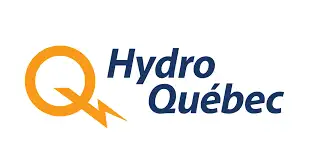Hydro-Quebec adopts a corporate structure designed to optimize the energy transition

Protective Relay Training - Basic
Our customized live online or in‑person group training can be delivered to your staff at your location.

- Live Online
- 12 hours Instructor-led
- Group Training Available
Hydro-Québec Unified Corporate Structure advances the energy transition through integrated planning, strategy, infrastructure delivery, and customer operations, aligning generation, transmission, and distribution while ensuring non-discriminatory grid access and agile governance across assets and behind-the-meter technologies.
Key Points
A cross-functional model aligning strategy, planning, and operations to accelerate Quebec's low-carbon transition.
✅ Four groups: strategy, planning, infrastructure, operations.
✅ Ensures non-discriminatory transmission access compliance.
✅ No staff reductions; staged implementation from Feb 28.
As Hydro-Qu�e9bec prepares to play a key role in the transition to a low-carbon economy, the complexity of the work to be done in the coming decade requires that it develop a global vision of its operations and assets, from the drop of water entering its turbines to the behind-the-meter technologies marketed by its subsidiary Hilo. This has prompted the company to implement a new corporate structure that will maximize cooperation and agility, including employee-led pandemic support that builds community trust, making it possible to bring about the energy transition efficiently with a view to supporting the realization of Quebecers’ collective aspirations.
Toward a single, unified Hydro
Hydro-Québec’s core mission revolves around four major functions that make up the company’s value chain, alongside policy choices like peak-rate relief during emergencies. These functions consist of:
- Developing corporate strategies based on current and future challenges and business opportunities
- Planning energy needs and effectively allocating financial capital, factoring in pandemic-related revenue impacts on demand and investment timing
- Designing and building the energy system’s multiple components
- Operating assets in an integrated fashion and providing the best customer experience by addressing customer choice and flexibility expectations across segments.
Accordingly, Hydro-Québec will henceforth comprise four groups respectively in charge of strategy and development; integrated energy needs planning; infrastructure and the energy system; and operations and customer experience, including billing accuracy concerns that can influence satisfaction. To enable the company to carry out its mission, these groups will be able to count on the support of other groups responsible for corporate functions.
Across Canada, leadership changes at other utilities highlight the need to rebuild ties with governments and investors, as seen with Hydro One's new CEO in Ontario.
“For over 20 years, Hydro-Québec has been operating in a vertical structure based on its main activities, namely power generation, transmission and distribution. This approach must now give way to one that provides a cross-functional perspective allowing us to take informed decisions in light of all our needs, as well as those of our customers and the society we have the privilege to serve,” explained Hydro-Québec’s President and Chief Executive Officer, Sophie Brochu.
In terms of gender parity, the management team continues to include several men and women, thus ensuring a diversity of viewpoints.
Hydro-Québec’s new structure complies with the regulatory requirements of the North American power markets, in particular with regard to the need to provide third parties with non-discriminatory access to the company’s transmission system. The frameworks in place ensure that certain functions remain separate and help coordinate responses to operational events such as urban distribution outages that challenge continuity of service.
These changes, which will be implemented gradually as of Monday, February 28, do not aim to achieve any staff reductions.











